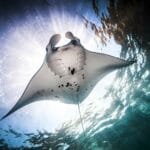Get ready to enter a world inhabited by colossal rodents! We’re diving into the captivating differences between the mighty capybara and the enigmatic nutria. These giant creatures, often mistaken for one another because of their impressive size and love for water, have carved out a special niche in nature. Come along on an exciting adventure as we uncover the true identities of these rodent doppelgangers.
Unveiling the Differences: A Closer Look at Two Rodent Giants
So, you’ve spotted a giant rodent chilling by the water… but is it a capybara or a nutria? These two furry critters often get mistaken for one another, but don’t worry – with a little detective work, you’ll be able to tell them apart!
Size Matters: A Giant Among Rodents
The most obvious difference? Size! Capybaras are the undisputed champions of the rodent world, reaching up to 4 feet long and tipping the scales at a hefty 140 pounds. That’s bigger than some dog breeds! Nutrias, while still large rodents, are notably smaller, averaging 2-3 feet in length and weighing a more modest 10-20 pounds.
Tail Tale: A Clear Giveaway
Here’s a quick way to tell them apart: capybaras are rocking the “tailless” look. Nutrias, on the other hand, sport long, rounded, rat-like tails. So, if you spot a giant rodent with a prominent tail, you’ve likely found yourself a nutria.
Webbed Wonders: Feet Designed for Water
Both capybaras and nutrias are quite comfortable in the water, but their feet reveal subtle differences in their swimming styles. Capybaras have partially webbed feet, while nutrias boast fully webbed hind feet, making them incredibly agile swimmers.
Flashing those Pearly Whites
Believe it or not, even their teeth can help you distinguish these rodents! Nutrias are easily identifiable by their bright orange incisors. Capybaras, in contrast, have paler yellow teeth.
Location, Location, Location
Where you are in the world can offer valuable clues to the capybara vs. nutria mystery. Capybaras are native to the warm, tropical regions of South America, where they lounge near water bodies in marshes, grasslands, and forests. Nutrias, originally from South America, are now found worldwide, having established themselves in wetlands, marshes, and calm waterways across North America, Europe, and Asia.
| Feature | Capybara | Nutria |
|---|---|---|
| Size | Up to 4 feet, up to 140 lbs | 2-3 feet, 10-20 lbs |
| Tail | Tailless | Long, round, rat-like |
| Feet | Partially webbed | Fully webbed hind feet |
| Teeth | Pale yellow | Bright orange incisors |
| Native to | South America | South America (now found worldwide) |
Social Butterflies vs. Private Lives
Capybaras are the social butterflies of the rodent world, living in large herds that can number up to 100 individuals. They enjoy grazing together and simply basking in each other’s company. Nutrias, on the other hand, prefer a more low-key lifestyle in smaller, family-oriented groups.
Timing is Everything: Activity Patterns
Both capybaras and nutrias are most active during the twilight hours of dawn and dusk. However, nutrias may become nocturnal to avoid disturbances or to take advantage of better foraging opportunities.
You Are What You Eat
When it comes to food, capybaras are creatures of habit, grazing primarily on grasses and aquatic plants. Nutrias have a more diverse palate, munching on a variety of plants, including roots, crops, and even the occasional invertebrate.
Coexisting with Humans: Conservation Status
Capybaras are currently listed as a species of “least concern,” indicating relatively stable populations. They’ve even been embraced as livestock in some areas. Nutrias, however, have a more complicated relationship with humans. Due to their tendency to munch on crops and their impressive burrowing skills, they have been labeled as invasive pests in many regions.
Ecological Roles: Ecosystem Engineers vs. Potential Troublemakers
While both species share a semi-aquatic lifestyle, their impacts on ecosystems differ. Capybaras, through their grazing, create clearings that benefit other plant and animal species. Nutrias, on the other hand, can disrupt the balance. They compete with native species for resources and their feeding and burrowing behaviors can damage habitats.
So, the next time you find yourself wondering, “Is that a capybara or a nutria?” remember these key differences, and you’ll be well on your way to becoming a giant rodent identification pro!
Are Capybaras the Same as Nutria? Unveiling the Truth About These Giant Rodents
You might be surprised to learn that capybaras and nutrias, while often mistaken for one another, are actually quite different! While both enjoy a semi-aquatic lifestyle and share some physical features, like their sturdy builds and love for water, telling them apart is easier than you think.
Imagine a gentle giant, lounging by the water’s edge – that’s a capybara, the world’s largest rodent! They dwarf their smaller, more destructive counterparts, the nutrias. If you spot a long, rat-like tail, you’ve found yourself a nutria. Capybaras, on the other hand, have almost no tail at all, just a little nub.
Their differences go beyond looks. Capybaras, native to South America, are peaceful herbivores, content with munching on grasses and aquatic plants. Nutrias, however, have more adventurous palates. These omnivores aren’t afraid to add a little protein to their diet, snacking on small animals and insects alongside their plant-based meals.
This difference in diet points to a larger distinction: their relationship with humans. Capybaras are seen as gentle giants, often living in harmony with people and playing a vital role in maintaining the health of their ecosystems. Nutrias, on the other hand, have earned a bit of a reputation. Their adaptability and varied diet, while impressive, have led them to be considered invasive pests in some regions, where they can disrupt delicate ecosystems and damage crops.
Despite these differences, both species have developed fascinating ways to thrive in their watery worlds. Both capybaras and nutrias sport webbed feet, perfect for paddling through marshes and streams. Their thick fur, while differing slightly in color and texture, provides a waterproof barrier against the chill of the water.
So, while a quick glance might have you confusing these two fascinating creatures, a closer look reveals a world of difference. Understanding these differences helps us appreciate the unique roles each animal plays in its environment, highlighting the incredible diversity of the natural world.
Are Nutrias Friendly? Decoding the Rodent’s Behavior
So, you’ve seen these large rodents chilling around water, looking all cute and cuddly like oversized guinea pigs, and you’re wondering if they’re as friendly as they look? Well, the answer isn’t as straightforward as a simple yes or no. Unlike their often-confused-for cousins, the capybaras, who’ve earned a reputation for being chilled-out giants, nutrias are a bit more on the complex side.
Think of it this way: their friendliness is like a spectrum, influenced by a bunch of things. It’s kind of like how you might act differently around your best friend compared to a stranger, right? For nutrias, their mood can be swayed by how used they are to humans being around. In places where they see people regularly, they might be more tolerant, even a bit curious. However, it’s super important to remember that they are wild animals at heart. Their mood can flip pretty quickly, especially if they feel trapped or threatened.
While some folks might tell you about times they saw a nutria being playful or even approaching curiously, it’s always best to err on the side of caution. Imagine someone twice your size getting too close for comfort – you’d probably be a bit freaked out! The same goes for these guys. Avoid making any sudden moves or trying to pet them, as this could easily startle them, and you really don’t want to be on the receiving end of a startled nutria.
The key takeaway here is respect. Respect their space, their boundaries, and their wild nature. And hey, while we’re at it, let’s also respect the important role they play in the ecosystem. Supporting responsible wildlife management helps ensure that both nutrias and humans can coexist peacefully.
Is a Coypu the Same as a Capybara?
You might have heard the terms “coypu” and “capybara” thrown around, and they might seem like they’re talking about the same creature. After all, both are pretty big rodents that love hanging out near water. But are they really the same? Nope, not quite! While they share some similarities, there are some clear differences that set them apart.
Let’s start with size. Capybaras are the champs when it comes to rodent size – they’re like the gentle giants of the rodent world! These guys can grow to be over 5 feet long and weigh up to a whopping 140 pounds! Coypus, also known as nutrias, are considerably smaller. They typically measure somewhere between 2 and 3 feet and weigh in at around 10-20 pounds.
Their tails are another dead giveaway. Capybaras basically have what you might call a “stubby tail” – it’s so small, it’s almost like it’s not even there. Nutrias, however, are a different story. They have long, round tails that are pretty hard to miss, kind of like what you’d see on a rat.
If you’re up close (and they let you get close!), check out their teeth. Capybaras flash pearly whites, while nutrias have bright orange incisors. And if you can get a peek at their feet, capybaras have partially webbed feet, which help them navigate their watery homes. Nutrias, on the other hand, have fully webbed hind feet, making them strong swimmers.
Their lifestyles and personalities also have some differences. Capybaras are known for being social butterflies. They live in large groups called herds and love to hang out together. Nutrias, while not exactly loners, are a bit more independent and prefer smaller groups. Capybaras are also creatures of the day, most active during daylight hours. Nutrias tend to be more active at night.
When it comes to their addresses, capybaras call South America home and have a thing for wetlands – think marshes and grasslands. They’re primarily herbivores, which means they mostly munch on plants, especially grasses and aquatic plants. Nutrias are also originally from South America but have been introduced to other parts of the world. They’re a bit more adaptable and can live in different kinds of environments. As for their diet, they’re not as picky as capybaras. They’ll eat plants, but they’ve also been known to go for roots, bark, and even small invertebrates if they’re feeling adventurous.
Speaking of impact, capybaras play a super important role in their ecosystems. They’re considered a keystone species, which means they help keep their environment healthy and balanced. Unfortunately, nutrias can sometimes be a bit of a problem in certain areas because their eating habits can be quite destructive.
Here’s a quick recap of the key differences:
| Feature | Capybara | Coypu (Nutria) |
|---|---|---|
| Size | Larger (up to 5 ft, 140 lbs) | Smaller (2-3 ft, 10-20 lbs) |
| Tail | Vestigial (very small) | Long, rounded |
| Teeth | White | Orange incisors |
| Feet | Partially webbed | Fully webbed hind feet |
| Social Behavior | Highly social, live in large herds | Less social, smaller groups |
| Activity | Primarily diurnal (active during the day) | More nocturnal (active at night) |
| Diet | Herbivorous (mainly grasses, aquatic plants) | More diverse; plants, roots, bark, invertebrates |
| Native Region | South America | South America (introduced elsewhere) |
| Ecological Role | Keystone species | Can be invasive in some areas |
So, while they might look a bit similar at first glance, coypus and capybaras are definitely distinct creatures with their own unique characteristics. They remind us that the natural world is full of surprises and fascinating variations, even among animals that seem closely related.
If you are into discovering pictures of the smallest mammal adapted to living in aquatic and semi-aquatic environments, learn more about muskrats here. Alternatively, If you are interested in snakes, you wouldn’t want to miss this: More here about Northern Cottonmouth.
- Unlocking Francis Alexander Shields’ Finance Empire: A Comprehensive Biography - July 12, 2025
- Unveiling Francis Alexander Shields: A Business Legacy - July 12, 2025
- Francis Alexander Shields’ Business Career: A Comprehensive Overview - July 12, 2025















